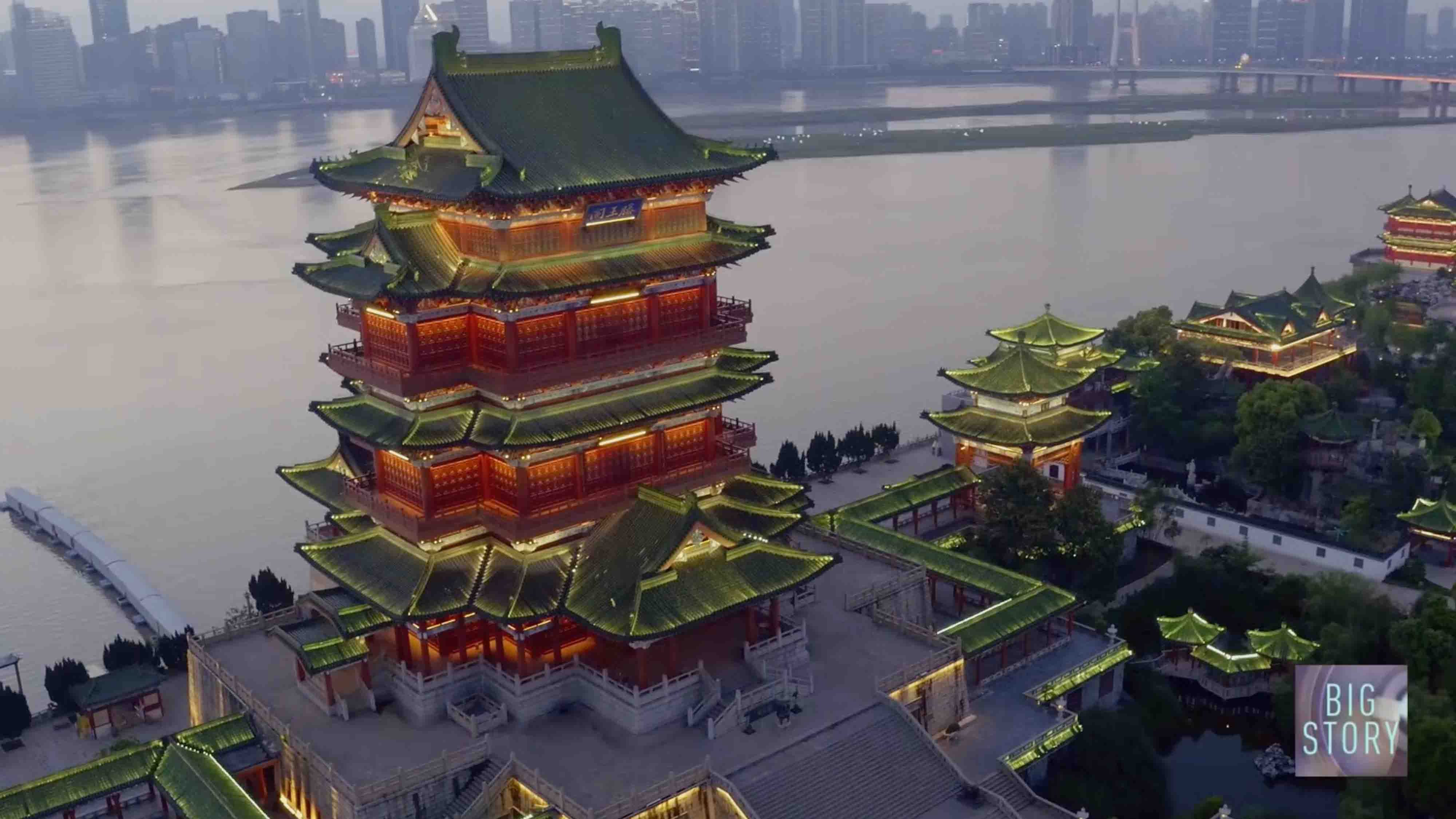CCTV's groundbreaking documentary series, "Bird’s-eye China," is the first Chinese program to have been produced using drone technology. Each episode in the series celebrates the history, culture, and natural beauty of a different area of China. Spanning 34 vastly different provinces and regions, this series is the most difficult and expensive documentary that CCTV has ever produced.
Join us in this unique journey across the sky, as CGTN looks at the best of China’s breathtaking scenery.
Jiangxi, Land of Mountains and Waters
Jiangxi Province, located in east China, is surrounded on three sides by mountains. The north of the province, where the land is mostly flat, is towered over by Mount Lushan. By contrast, the central part is an area of hills and valleys. Thousands of rivers run through Jiangxi, with most of them emptying into Poyang Lake.

Historically, Mount Lushan was a favorite retreat for the Chinese literati. Over the centuries, it’s estimated that the mountain was visited by more than 3,500 men of letters who, among their other writings, left behind 16,000 verses about the area.
Tang Dynasty poet Li Bai wrote the following about one sight on Mount Lushan: “The waterfall drops for 3,000 feet.”
Song Dynasty poet Su Shi, in describing the constantly changing scenery, wrote that he, “failed to see the true Mount Lushan.”

An ancient village called Huangling stands on the mountain, and September is the harvest season here. Without access to flat land, the villagers dry their grain on their windowsills and in other parts of their homes. This is referred to locally as "autumn drying." Anything can be dried using this method. The results are visually very attractive. For example, rice and black beans are formed into panda designs.

The Jinggang Mountains are famous worldwide, not so much for their beauty, but for a major historical event that took place here. In 1927, during the Autumn Uprising, Mao Zedong led his forces to break through an enemy encirclement. They made their way to the Jinggang Mountains, where they were later joined by revolutionary fighters coming from all over the country.

The story goes that a Song Dynasty emperor was so entranced by the blue-and-white ceramics produced here, that he named the place after his reign title, Jingde. This ancient kiln was built on a mountainside. The stair-step structure conforms with the most energy-efficient bottom-up design for ceramics production. At one time, the amount of porcelain produced at Jingdezhen amounted to several million pieces a year. They were shipped out of Jiangxi, and ultimately to the outside world, along the nearby Yangtze River.

During the Tang and Song dynasties, groups of migrants fleeing war in northern China, crossed the mountains and rivers to come and settle here. These people are known as the Hakka. Having been forced to flee their homes, they were initially unhappy here. Finding that the flat land was already largely taken, they were forced to lay out land on the mountain slopes. In this way, the Shangbao Terraces were created.

The Tang Dynasty poet Wang Bo once visited Tengwang Pavilion for a banquet. Afterwards, he wrote the famous verse, “Preface to Tengwang Pavilion”. Two lines are especially well-known:
“The fading afterglow and the lonely wild goose fly side by side. The autumn water and the vast sky are of the same color.”
Over the centuries, the pavilion has been damaged and rebuilt several times. The structure we see today is its 29th incarnation.

Related stories:









